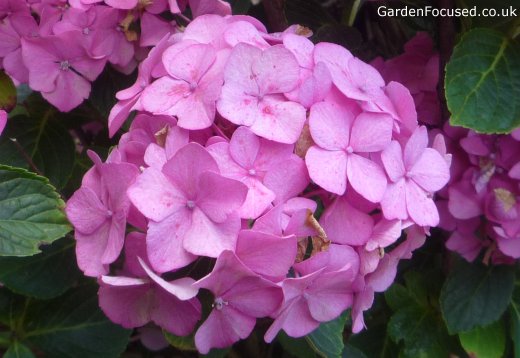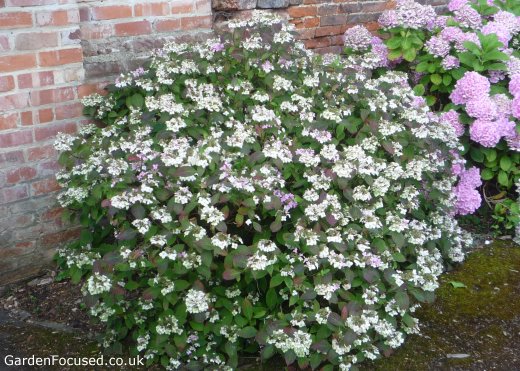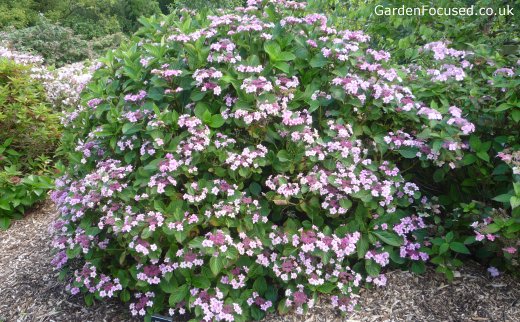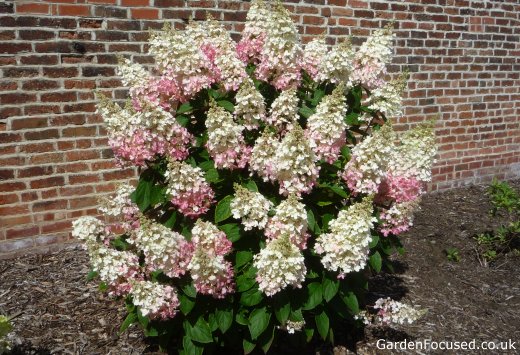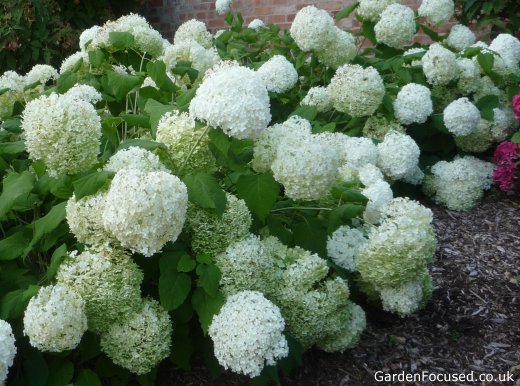PRUNING HYDRANGEAS IN THE UK
Different types of hydrangea require different pruning methods for best results. The key difference is that some varieties flower on old wood and some flower on new wood. Whilst most hydrangeas will flower with minimal care, the best results are achieved with regular pruning.
First step is to identify which type of hydrangea you will be pruning. The types are all pictured on this page to help you identify them. If you need more assistance, click here to go to our page on hydrangea varieties.
Hydrangea macrophylla mophead Renate Steiniger
If you still cannot identify the type of hydrangea your best option is to dead head it in mid March, let it grow and produce flowers for the first season. You will then be better able to identify the type from its flowers.
HOW TO PRUNE HYDRANGEA MACROPHYLLA
This group (often referred to as bigleaf hydrangeas in the US) includes mopheads and laceheads. Hydrangea serrata and aspera varieties should also be pruned in the same manner. They all flower on old wood and should be pruned in spring.
This is unusual for a shrub which flowers on old wood, normally they are pruned immediately after flowering. The reason for pruning hydrangea macrophylla in spring is explained because of their growth habit.
Hydrangea serrata Aigaku
Firstly, the buds which will produce flowers the next year occur mainly at the end of stems. Yes, potential flower buds do occur lower down the stems but these are not as reliable as the buds towards the end of the stems.
The second factor with hydrangea stems is that they are not so woody as most other shrubs and they are therefore more prone to frost damage. If the stems are pruned in autumn, the pruned ends of the stems and the buds are far more prone to frost damage because the pruning cut leaves the end of the stem open.
Hydrangea macrophylla lacecap Etoile Violette
The process for pruning Hydrangea macrophylla in spring is:
- Wait until you see new growth beginning to appear, normally mid to late March
- Cut off each flower head to just above the highest bud on each stem
- Remove any weak or diseased stem by cutting them out as near to the base of the plant as possible
- For plants that are three or more years old prune out two of the oldest stems as near the base as possible, this will encourage new stems to form
- It is possible to cut back all stems to the base if the plant has become unmanageable. It will recover but will not produce flowers in the current year.
- Feed with two handfuls of fish, blood and bone and apply a mulch.
HOW TO PRUNE HYDRANGEA PANICULATA AND ARBORESCENS
Hydrangea paniculata Pinky Winky
This group of hydrangeas flower from buds produced in the current year. The process for pruning Hydrangea paniculata and arborescens is:
- Prune in mid March to early April
- Cut back all the stems to a length of about 30cm / 12in. Make the cuts immediately above a bud.
- Feed with two handfuls of fish, blood and bone and apply a mulch.
Hydrangea arborescens Annabelle
